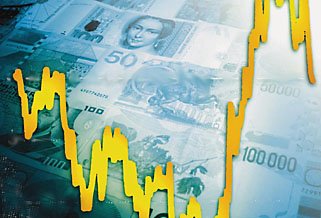Why Use Bollinger Bands In Forex Trading?
By: Kenneth Aikens
Imagine if you were a successful forex trading professional. You would feel very good knowing that you knew exactly how to diagnose your indicators on your forex trading platform. Bollinger Bands is one of many different technical indicators used by currency traders. Below we will take a look at how Bollinger Bands are used by professional forex traders.
Bollinger Bands are forex trading indicators that were first developed by John Bollinger during the 1980s. Bollinger Bands are one of the most powerful concepts available to the technically based investor, indicating whether prices are high or low on a relative basis. Bollinger Bands are based upon a simple moving average. The very popular Bollinger bands are actually a set of three horizontal lines. Bollinger Bands are plotted at standard deviation levels above and below a moving average. Bollinger Bands are a technical tool used to determine whether a currency pair is high or low relative to its recent trading history. The difference between Bollinger Bands and envelopes is envelopes are plotted at a fixed percentage above and below a moving average, whereas Bollinger Bands are plotted at standard deviation levels above and below a moving average.
The default setting for Bollinger bands is 20 and 2, which means the indicator takes the past 20 time periods into account and bases its calculations based on two standard deviations from the mean. Bollinger recommends using 20 for the number of periods in the moving average and using 2 standard deviations. Using the standard deviation ensures that the bands will react quickly to price movements and reflect periods of high and low volatility.
Bollinger Bands can also be used for identifying when trend reversals may occur. Trending patterns and continuation signals In general, during an upswing, the price will stay within the upper band and the central moving average. The bands will often remain tight as long as the trend is strong. A trend that hugs one band signals that the trend is strong and likely to continue. If the bands are close and then begin to widen, it may signify that the trend is weakening and may possibly be due for a reversal.
Bollinger created his bands at a time when many analysts did not understand that volatility was a dynamic variable that fluctuated and not a static one (like percentage based envelopes). It was John Bollinger that standardized the format by adding volatility as a key variable, using standard deviation as the way to set band width. The distinctive characteristic of Bollinger Bands is that the spacing between the bands varies based on the volatility of the prices. A narrow envelope indicates a lower amount of volatility while a wide envelope indicates a higher amount. High volatility levels can sometimes be used to time trend reversals, such as market tops and bottoms and low volatility levels are sometimes used to time the beginning of new upward price trends following periods of consolidation.
We end here but in conclusion I hope you the reader were able to discern the major features of Bollinger Bands. Acurately interpreting Bollinger Bands along with other powerful technical indicators will place you well on your way to financial freedom courtesy of currency trading.
Article Source: http://www.articlecafe.net


No comments:
Post a Comment